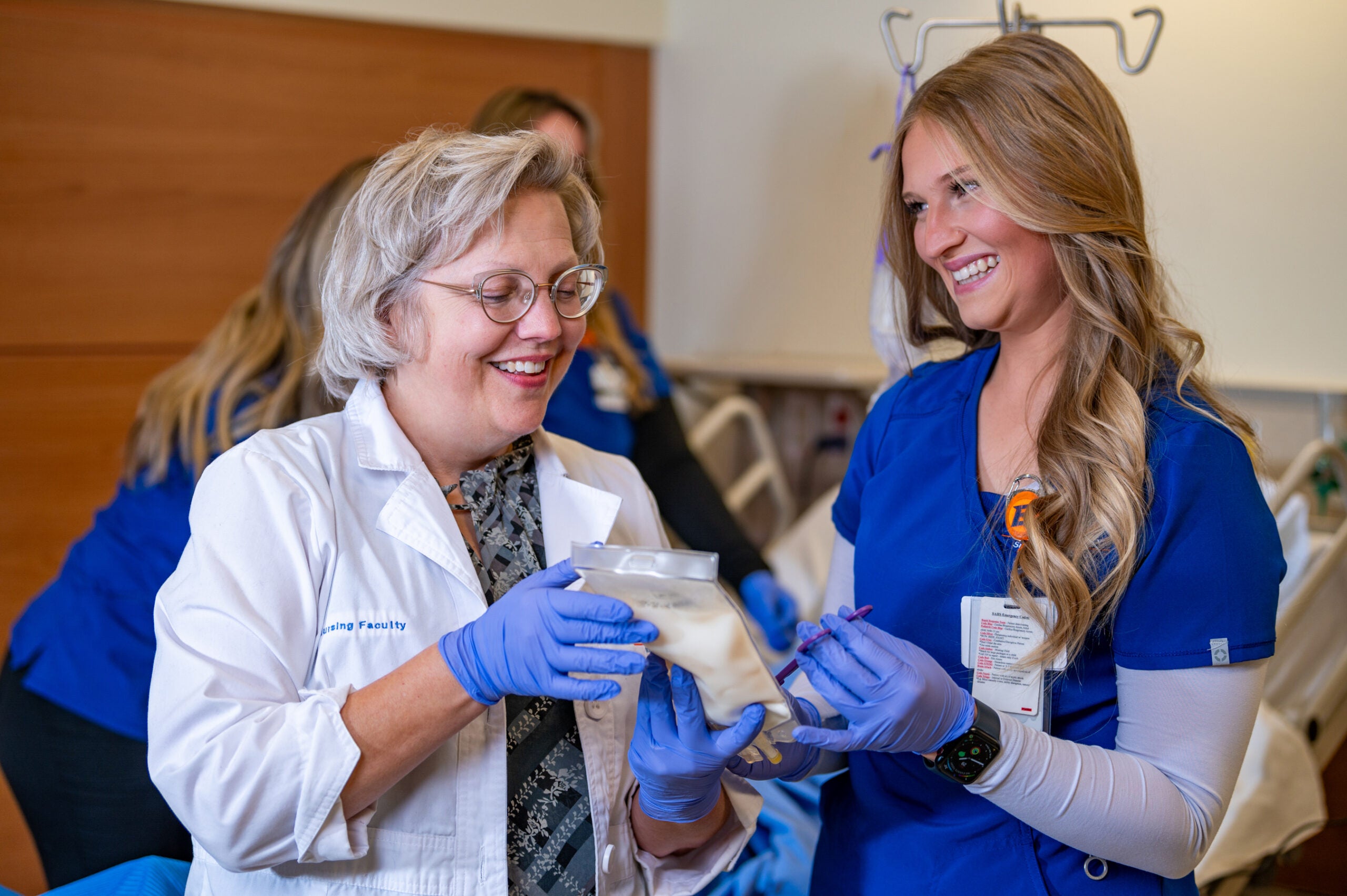Most areas of research seem peculiarly specific. Take the work of clinical associate professor Jennifer Marsh and Amy Spurlock, professor and JoAnna “Jody” DeMeyer Endowed Chair in Nursing. They research the use of blended food instead of a commercial formula in feeding tubes.
But their projects didn’t develop from an unusual fascination with liquid diets. Like many researchers, both nurses began their work because of personal experience.
Unwelcome firsthand knowledge
After surviving cancer as a child and living almost 50 years of a very healthy life, Jennifer Marsh’s mother was suddenly diagnosed with vocal cord paralysis in 2014. As a result, she had trouble swallowing; food and fluid entered her lungs and caused pneumonia.

Marsh’s mother received a feeding tube in her stomach to bypass the swallowing problems. But different complications arose, and instead she dealt with pain, nausea, vomiting and unhealthy weight loss.
A career nurse, Marsh had only cared for a few patients with feeding tubes. Yet none of them had such negative side effects. “I was surprised when my mom had them,” she said.
To try and find a solution, doctors moved Marsh’s mother’s feeding tube to her intestines. But instead of relief, sepsis set in. Six months after the swallowing problem emerged, Marsh’s mother died.
“It was very sudden and traumatic,” Marsh said. “I don’t think I’ll ever get over it.”
What is blenderized tube feeding?
People who have difficulty swallowing or processing food often receive liquid meals through a tube connected directly to their stomach or intestines. This is known as tube feeding.
Often when patients use feeding tubes, their diet consists of commercially-made formulas, like Ensure. Even though formulas are sterile and nutritionally complete, their ingredients can cause negative gastrointestinal side effects for some patients, like Marsh’s mother.
To combat these food intolerances, there’s been a rise in “blenderized tube feeding.” Instead of formula, caregivers feed patients canned or whole foods that have been pureed in a blender. Although there isn’t a wide body of knowledge in the field, Amy Spurlock’s research and others’ increasingly report positive impacts of blenderized tube feeding.

Spurlock also investigates blenderized tube feeding as a result of losing a loved one to complications from feeding tubes. In 2021, Marsh came across Spurlock’s story. Marsh started to wonder: if her mother had blenderized food, would she have tolerated the tube feeding better?
“I hated to see her suffer,” Marsh said. Although she had never been interested in this area of nursing before, Marsh connected with Spurlock. Shortly after, she began blenderized tube feeding research, too.
From questions to results
Marsh partnered with Spurlock and Teresa Johnson, a dietician and one of Spurlock’s previous research collaborators. The team investigated the habits of people using feeding tubes by surveying registered dietician nutritionists: are their patients using blenderized food instead of commercial formula? If so, how are blended meals impacting their side effects?
Differing from Spurlock’s previous research, this study evaluates tube feeding with a “J tube”, or jejunostomy tube. Interestingly, this method bypasses early stages of the digestive process by inserting nutrients directly into the small intestines.
Despite the tube being lower in the digestive system, their results are encouraging. Patients tolerated the food much better, they didn’t have as many negative side effects like nausea, bloating or vomiting, and they gained weight.
“Compared to the standard commercial formula feeding, the blended tube feeding had a higher percentage of patients meeting the goal growth rates,” Marsh said. “It was really positive.”
A way to ease future suffering
There is currently no policy or best-practice procedure for using blenderized tube feeding in hospitals. Even though some patients have severe negative side effects to commercial formulas, that’s what hospitals use. Given her mother’s experience and the results of this study, Marsh considers this a much-needed area for growth.
“There’s just such a need out there,” she said. “I hope that this [research] helps someone else that may be experiencing [an issue with commercial formula] or have a loved one that has it.”
From the loss of her mother to patients in the study enduring similar experiences, Marsh admits: “It was hard research to think about. But, hopefully, if someone has commercial formula tube feeding problems and they read this, they might look into blenderized tube feedings and feel a little better.”